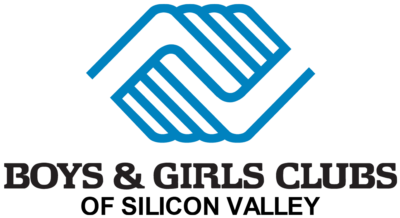What Are Emotional Check-ins?
Emotional check-ins are a simple tool that youth, parents and teachers can use to pause, reflect and identify emotions. These intentional activities can be done one-on-one with your kid or in a group setting, like in a classroom or at the dinner table.
Check-ins can be formal and structured, or informal and on the fly. The important thing is you are helping kids to intentionally identify, reflect on and share their emotions.
Remember, emotional check-ins may not come naturally for everyone. Some people wear their heart on their sleeve and others need to do some digging to recognize how they’re feeling. Plus, when you’re a kid, learning “emotion words”— the vocabulary of how you’re feeling — is all new.
Most importantly, for emotional check-ins to be successful you need to create a safe environment where kids can be vulnerable.
Just like anything, emotional check-ins get easier with practice.
“The most important thing parents and caregivers can do when supporting their child’s mental health is to consistently and proactively engage them in open dialogue about their lives, emotions, and challenges,” says Endries. “It is critical that youth know who to go to in times of need and feel safe doing so.”


Why Are Emotional Check-ins Important?
There are many reasons why emotional health check-ins are important for kids and teens. Here are a few of the benefits:
- Kids learn to identify their emotions. Many kids and teens struggle to identify and express their emotions in a healthy way. Emotional check-ins can help young people understand their emotions and how they’re affected by them.
- Kids develop strategies for managing their emotions. Everyone experiences negative emotions from time to time. Emotional check-ins help kids learn when to use coping mechanisms for managing intense emotions. Healthy coping strategies might include deep breathing, positive self-talk, writing in a journal or finding someone to talk to.
- Build supportive relationships. When kids feel comfortable expressing their emotions, they are more likely to build supportive relationships with others. Creating emotionally-safe spaces allows kids to feel more comfortable sharing their feelings and moods with parents, teachers and counselors.
5 Ideas for Emotional Check-ins for Kids
Emotions check-ins provide fun, engaging ways to identify feelings. Here are some emotional check-in questions to get kids thinking about how they’re feeling:
Internal Weather Report
Internal Weather Report: Ask kids, “If your mood were the weather, what would it be? For example, if you’re angry it could be a thunderstorm, or if you’re happy it could be sunny.” Give them a chance to think, then share their mood. They can choose to explain and elaborate on their feelings, or not.
Feelings 1-10
Feelings 1-10: Ask kids, “Rank your mood today on a scale of 1 to 10, with 1 being the worst mood and 10 being the best.” They can choose to explain and elaborate on their ranking, or not.
Pop Culture
Pop Culture: Ask kids, “If your current mood were a song or movie, what would it be? For example, if you’re having a great day your song could be ‘Happy’ by Pharrell, or if you’re grumpy your movie could be ‘The Grinch.’” Give them a chance to think, then share their mood. They can choose to explain and elaborate on their feelings, or not.
Highs & Lows
Highs & Lows: Ask youth to think of their “high and low” of the day — this is the best thing that they experienced during the day and the worst thing that they experienced during the day. Give them a chance to think, then share. They can choose to explain and elaborate on their feelings, or not.
Rose, Bud, Thorn
Rose, Bud, Thorn: Ask youth to think of their “rose, bud and thorn” of the day — this is the best thing that happened to them during the day (rose), something they’re looking forward to (bud) and the worst thing that happened to them during the day (thorn). Give them a chance to think, then share their mood. They can choose to explain and elaborate on their feelings, or not.
Other ideas include creating an “emotional check-in chart.” Have kids create it with you, using colors or images that show a full range of emotions. Classrooms and Clubs can also help establish a routine for a daily emotions check-in — this often sets the day off right as everyone knows how each other is feeling.
Other ideas include creating an “emotional check-in chart.” Have kids create it with you, using colors or images that show a full range of emotions. Classrooms and Clubs can also help establish a routine for a daily emotions check-in — this often sets the day off right as everyone knows how each other is feeling.
How to Support Kids’ Emotions
When using emotional check-ins, it is important to respond appropriately to what is shared.
If you had a busy night of activities planned, but your child just expressed they’re going through some tough feelings, it might be valuable to shift your evening to spending time together, relaxing or relieving stress.
Adults don’t need to jump into action or try to “fix” young people’s negative feelings — you just need to be there for your child, to listen and understand.
“If you sense your child is struggling with their mental or emotional health, find ways to express your concern in a calm and non-judgmental way,” advises Endries. “This builds their trust in you as a safe person to discuss their feelings with, good and bad.”
After emotions are expressed, it’s time to help your child learn how to keep their emotions in check. For managing intense emotions, here are some healthy coping mechanisms you can share and model with your child:
- Go for a walk or go outside for some fresh air
- Try deep breathing
- Journal, draw or use art to express emotions

The Bottom Line
Ultimately, it’s important for youth to know that it is OK to feel how they are feeling — everyone experiences a range of emotions every single day. It’s normal to feel sad, excited, angry, calm or nervous every day, multiple times a day. What matters most is how youth cope with these feelings. Learning to identify and share emotions is a huge lesson that kids and teens will use for life. It’ll support their overall health and well-being, as well as build stronger communication and relationships.
Raise Your Hand for Great School Years
Boys & Girls Clubs provides thousands of young people each year with the mentorship, meals, and meaningful life experiences that they need to thrive – in school and out. Join us on our mission of helping all young people reach their full potential and donate today.







